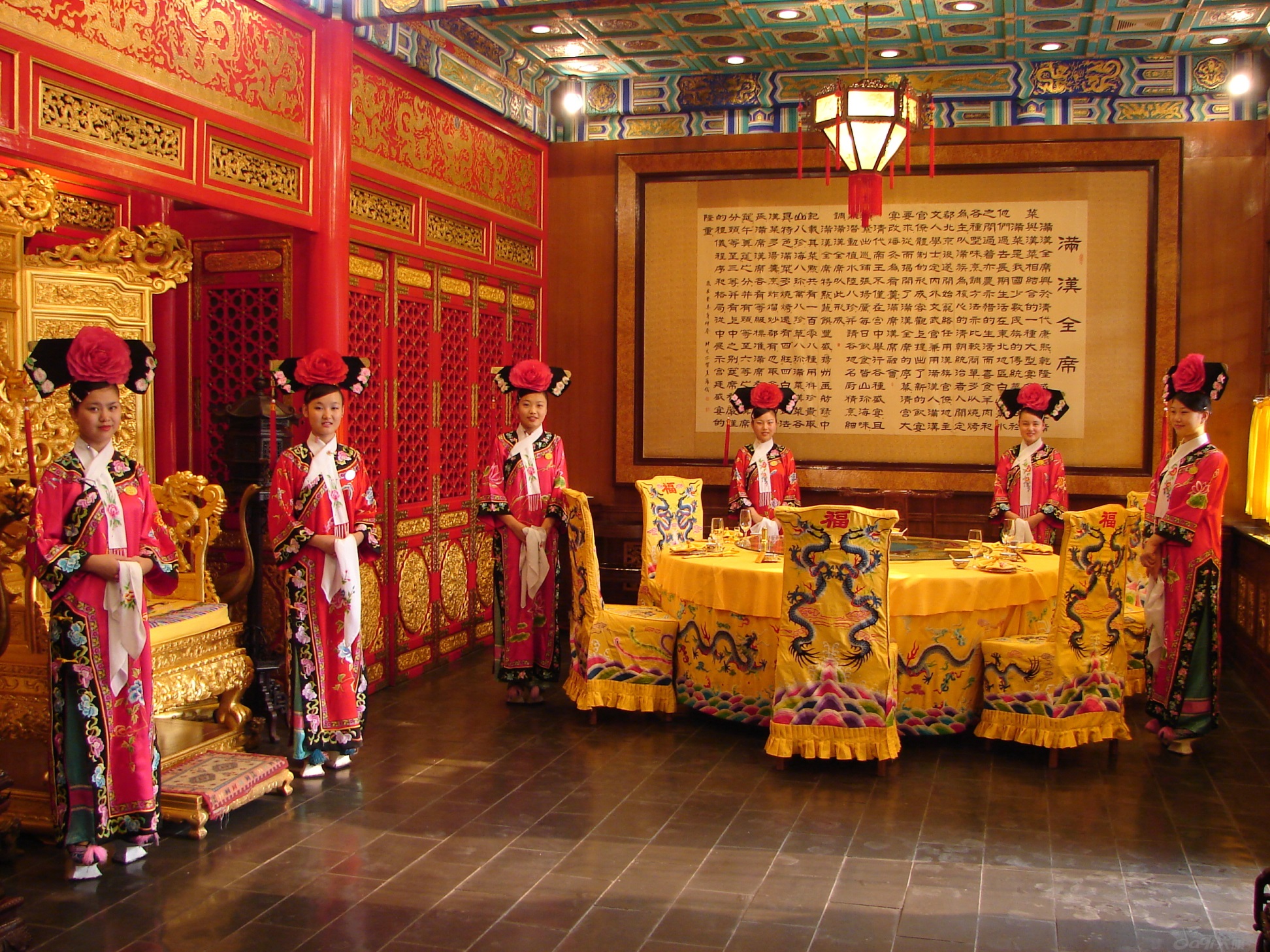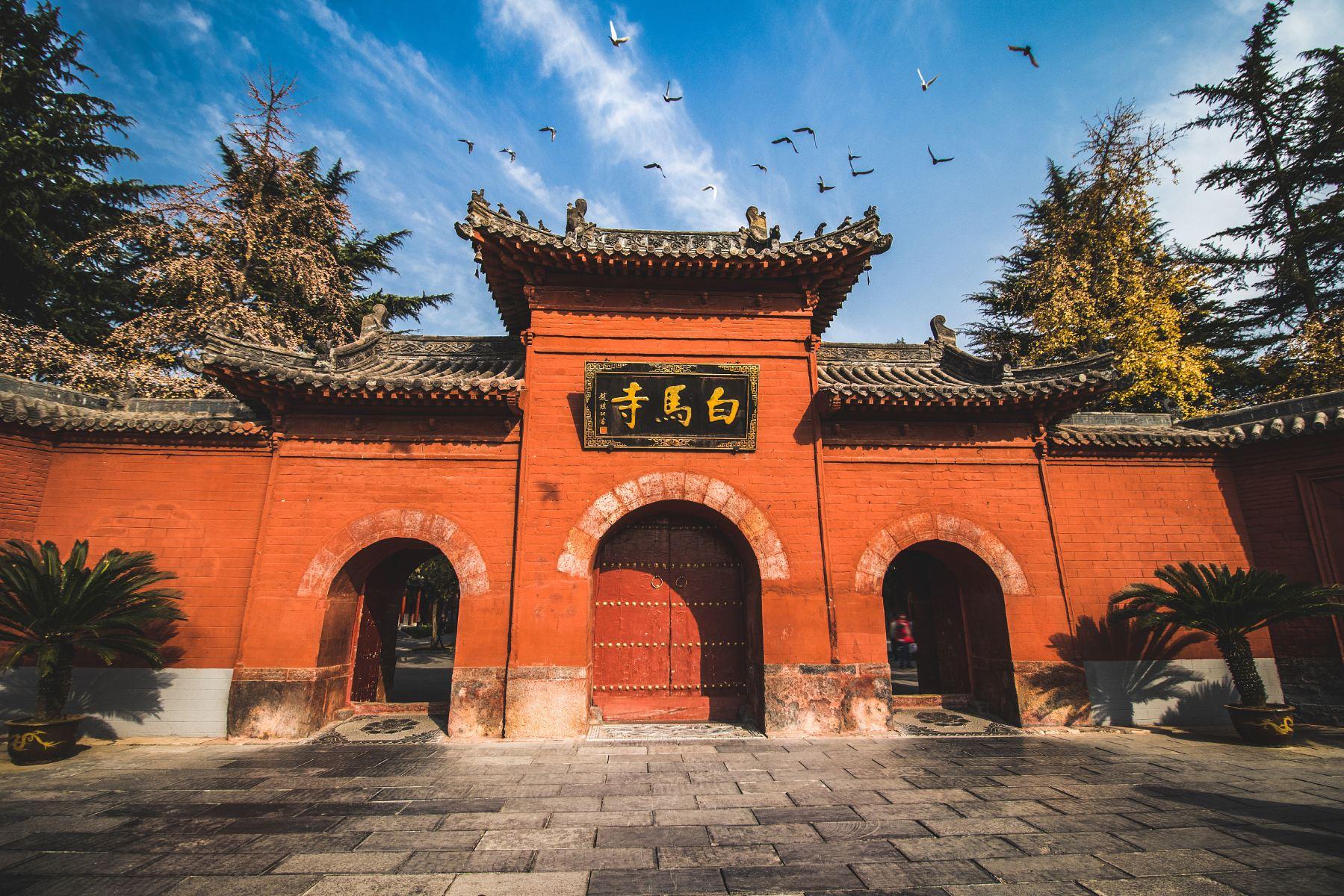
漢德百科全書 | 汉德百科全书
 Vacation and Travel
Vacation and Travel


Die "alte Stadt" Baidicheng (chinesisch 白帝城风景区; Baidicheng fengjingqu), ist ein Kulturdenkmal im Osten des Kreises Fengjie, Chongqing, etwa 10 km vom Sitz der Kreisregierung entfernt. Als "Landschafts- und Erholungsgebiet Baidicheng" wurde es im Oktober 2004 gegründet. Es hat eine Fläche 53,7 km² und mehr als 37.000 Einwohner. Administrativ setzt sich Baidicheng aus einer Einwohnergemeinschaft und acht Dörfern zusammen, die teilweise zur Großgemeinde Yong'an, teilweise zur Großgemeinde Baidi gehören.
Wichtigste Sehenswürdigkeit des Landschafts- und Erholungsgebietes ist Baidicheng, eine alte städtische Ansiedlung am nördlichen Ufer des Jangtsekiangs in China. Der Name bedeutet wörtlich "Stadt des Weißen Kaisers". Es heißt, das Gebiet sei einst von weißem Nebel umgeben gewesen, der ihm ein mysteriöses doch friedliches Aussehen verliehen hätte, ganz so, wie ein Kaiser aussehen sollte. Es heißt auch, dass manche einen weißen Drachen von dort hätten kommen gesehen, das Symbol des Kaisers, und der Kriegsherr Gongsun Shu (公孙述) (? - 36) hielt dies für ein glücksbringendes Zeichen und erklärte sich selbst zum Kaiser von Chengjia. Er gründete die Stadt und nannte sich selbst der Weiße Kaiser. Die Bauwerke der alten Stadt liegen heute wegen des Drei-Schluchten-Dammes auf einer kleinen Insel, die vom Stadtzentrum Chongqings aus leicht mit dem Schiff zu erreichen ist.
Baidi ist auch als "Stadt der Dichtungen" bekannt, weil viele Dichter, einschließlich des berühmten Li Bai, über sie schrieben. Einige, wie beispielsweise Du Fu, wohnten dort für eine Weile.
In Baidi starb auch Liu Bei, der erste Herrscher des Reiches Shu Han der Zeit der Drei Reiche.
白帝城(はくていじょう)は、中国重慶市奉節県の長江三峡に位置する地名。かつて新末後漢初の群雄公孫述がこの地に築いた城が白帝城と呼ばれたことが由来である。永安宮ともいう。三国時代、蜀(蜀漢)の建国者劉備が夷陵の戦いで呉に敗れ、逃れたのが白帝城であった。劉備は後事を諸葛亮に託し、この城で没した。『三国志演義』では、呉の大将陸遜が劉備を追って白帝城を目指したが、予め諸葛亮が仕掛けておいた石兵八陣により撤退を余儀なくされる。後の唐の時代の詩人李白は『早発白帝城』(早に白帝城を発す)という詩を残している。
Baidicheng or Baidi Fortress is an ancient fortress and temple complex on a hill on the northern shore of the Yangtze River in China, 8 km east of the present day Fengjie County seat in Chongqing municipality.[1]
The name Baidicheng literally means White Emperor City.[2][3] It has been said that the area was once surrounded with a white mist, giving it a look which was rather mysterious, yet serene—much as what an emperor should be like.[citation needed] It has also been said[by whom?] that someone saw a white dragon, the symbol of the Emperor appear there, that the warlord Gongsun Shu thought this was a fortuitous sign, and so declared himself Emperor of Chengjia. Thus Gongsun was said to have founded the city, and so called himself "the White Emperor".
The temple complex is now on an island, due to raised water levels following the construction of the Three Gorges Dam. Many older structures were submerged, and new buildings have been built higher up. The temple complex island is linked to the north bank of the Yangtze, by a bridge. The island continues to be a tourist attraction, with many cruise ships halting for tours at Fengjie.[citation needed]
Baidi is also known as the "City of Poems", because so many poets such as Li Bai wrote about it (see: "Departing from Baidi in the Morning").[4] Another famous and talented poet, Du Fu, resided in Baidi for 2 or 3 years.
Liu Bei, the first emperor of the Shu Han during the Three Kingdoms era, is said to have died in Baidi, although, according to Records of the Three Kingdoms, Liu Bei died at his palace of Yong'angong.[citation needed] The site of Yong'angong was located in what is now inside of the Normal School of Fengjie County, a few miles away from the current Baidicheng. Thus, as in other cases, the location of an ancient place is not necessarily the same as the location of a modern town with the same name.
In 2006, the Chinese government established Baidi Fortress as a national heritage site.
Baidi (白帝城 ; pinyin : Báidì Chéng), qui signifie l'Empereur Blanc, est une petite localité située à l'entrée de la Gorge de Qutang sur la rive nord du Yangzi (Chang Jiang), dans le district de Fengjie de la municipalité de Chongqing (partie de l'ancien district de Wanxian de la province du Sichuan) en Chine. La ville, qui est en fait davantage un regroupement de temples et de portails, est l'hôte de plusieurs sites historiques et événements se rapportant à la période des Trois Royaumes. C'est dans cette ville que Liu Bei se réfugia à la suite de sa grande défaite à la Bataille de Yiling. Il y mourut peu de temps après, en l'an 223.
On y compte aujourd'hui plusieurs poèmes, inscriptions et reliques culturelles des dynasties Sui, Yuan, Ming et Qing d'une grande valeur historique.
Байдичэн (кит. упр. 白帝城, пиньинь Baidicheng) — замок и храмовый комплекс на горе Байди на северном побережье реки Янцзы в уезде Фэнцзе на востоке города Чунцин в Китае. Расположен в 8 км от местонахождения уездной управы. Байдичэн переводится с китайского языка, как «город Белого императора». К воротам комплекса ведёт лестница с более, чем 500 ступенями. Здесь начинаются Три ущелья. Это место приобрело известность по всему Китаю в VII веке при правлении династии Тан, когда поэт Ли Бо посвятил ему своё известное стихотворение.






 Education and Research
Education and Research

 Education and Research
Education and Research
 Universities and Colleges in Chinese History
Universities and Colleges in Chinese History

 History
History
 L 1000 - 1500 AD
L 1000 - 1500 AD
 Jiangxi Sheng-JX
Jiangxi Sheng-JX

 Vacation and Travel
Vacation and Travel





Das Kloster des weißen Pferdes liegt circa 12 Kilometer östlich der heutigen Stadt Luoyang in der Provinz Henan und soll angeblich im Jahre 68 gegründet worden sein.
Sein Name geht auf die folgende Legende zurück, die im "Buch über die Späte Han Dynastie" enthalten ist, das im 5. Jahrhundert kompiliert wurde.
Der Kaiser Ming aus der Östlichen Han Dynastie träumte im Jahre 64 von einer goldenen Gestalt, die über seinem Palast schwebte. Seine Minister erklärten ihm, daß er vom Buddha in Indien geträumt habe. Der Kaiser sandte daraufhin eine 18-köpfige Delegation nach Indien, die dort den Buddhismus studieren sollte. Nach drei Jahren kehrte die Delegation aus der Gegend des heutigen Afghanistan, wo sie die beiden indischen Mönchen Kashyapamtanga und Dharmaraksha getroffen hatte, zurück. Mit ihnen kam ein weißes Pferd, das ein Bündel voller buddhistischer Sutren und Figuren trug. Im folgenden Jahr ließ dann der Kaiser den Tempel für die Mönche und zur Erinnerung an die Ankunft des weißen Pferdes bauen. (Quelle:http://www.china-entdecken.com/LandundLeute/Louyang-Baima%20Si.htm)
迦葉摩騰と竺法蘭の二人の僧が、白馬に乗り『四十二章経』という経典を携えて、都の洛陽を訪れたという説話に因んで、白馬寺と名づけられた。[1]
『洛陽伽藍記』巻4によると、北魏時代には後漢の明帝が建立した寺として、洛陽城の城西、西陽門外3里の地点にあったと記される。北魏の頃には、寺に安置された経函が放光し、その経函に対する信仰があったことが記される。ただし、その経函中に収められた経典が『四十二章経』であるとは明記されていない。
White Horse Temple (Chinese: 白马寺) is Buddhist temple in Luoyang, Henan that, according to tradition, is the first Buddhist temple in China, having been first established in 68 AD under the patronage of Emperor Ming in the Eastern Han dynasty.[1][2][3]
The site is just outside the walls of the ancient Eastern Han capital, some 12–13 kilometres (7.5–8.1 mi) east of Luoyang in Henan Province. It is approximately 40 minutes by bus No. 56 from Luoyang railway station.[4] The temple, although small in comparison to many others in China, is considered by most believers as "the cradle of Chinese Buddhism".[5] The geographical landmarks to the south are Manghan mountain and Lucoche River.[6]
The main temple buildings, a large complex, were reconstructed during the Ming (1368 to 1644) and Qing (1644 to 1912) dynasties.[7] They were refurbished in the 1950s, and again in March 1973 after the Cultural Revolution. It has numerous halls divided by courtyards and manicured gardens, covering an area of about 13 hectares (32 acres). The display plaques in Chinese and English give ample descriptions of the Buddhist deities installed in the halls. Significant statues include Śākyamuni Buddha, Maitreya (the laughing Buddha in China), the Jade Buddha, figures of saints such as Guru Avalokiteśvara, Amitābha and arhats and stone statues of the two white horses which brought the Indian monks to China and two mythical lions at the entrance.[1][2][3] Under international funding, the temple has undergone many changes, both structurally and internally. The most recent cooperative project, with India, was completed in 2008 when the Sanchi Stupa and the Sarnath Buddha statue were erected.
Le temple du Cheval blanc (chinois simplifié : 白马寺 ; chinois traditionnel : 白馬寺 ; pinyin : ) de Luoyang, province du Henan, en République populaire de Chine, est un complexe monastique bouddhique situé dans la banlieue est de la ville moderne, à l’emplacement où, selon la tradition, s’arrêta en 67 ap. J.-C. le cheval portant depuis l’Afghanistan les premiers soutras. Les constructions et objets qu’il renferme datent essentiellement de la période allant des Jin au milieu des Qing (XIIe-XVIIIe siècles) et comprennent en particulier un ensemble de statues de laque de l’époque Yuan (1271-1368). Il fait partie depuis 1961 du patrimoine culturel protégé1.
D’autres temples portèrent ou portent encore le même nom. Certains font directement référence au Baimasi de Luoyang, d’autres ont pu être nommés indépendamment2.
Il monastero del Cavallo Bianco (白馬寺T, 白马寺S, Báimǎ-sìP) è, secondo la tradizione, il primo tempio buddhista della Cina, fondato nel 68 d.C. sotto l'imperatore Ming (r. 58-75 d.C.) degli Han Orientali, situato nella capitale Luoyang.[1][2][3]
Il monastero si trova appena al di fuori delle mura dell'antica capitale degli Han Orientali, distante circa 12-13 km a est dall'attuale Luoyang, provincia dello Henan. Dista approssimativamente 40 min coll'autobus no. 56 dalla stazione ferroviaria di Luoyang.[4] Il tempio, nonostante le sue ridotte dimensioni, è considerato da molti fedeli come "la culla del buddhismo cinese".[5] I punti di riferimento geografici sono, partendo da sud, il monte Manghan e il fiume Luo.[6]
Le principali costruzioni del monastero furono erette durante le dinastie Ming (1368-1644) e Qing (1644-1912);[7] vennero ristrutturate negli anni 1950, e poi nel marzo del 1973 dopo la Rivoluzione Culturale. È costituito da numerose sale separate da cortili e giardini ben curati, coprendo un'area di 13 ettari. Le placche in cinese e in inglese danno una ricca descrizione delle statue buddhiste situate in ogni sala; esse raffigurano, tra gli altri, Śākyamuni, Maitreya, il Buddha di Giada, icone di santi come Guru Avalokiteśvara, Amitābha, arhat, due cavalli bianchi portati dall'India da due monaci indiani, e due leoni mitici all'entrata.[1][2][3] Per via dei finanziamenti internazionali, il tempio ha subito numerosi cambiamenti, sia strutturalmente che internamente. Il progetto più recente, realizzato colla cooperazione dell'India, è stato terminato nel 2008 col completamento dello stupa di Sanchi e della statua del Buddha di Sarnath.
El Templo del Caballo Blanco (en chino: 白马寺, pinyin: Báimǎsì) es el primer templo del Budismo en la República Popular de China, establecido en el año 68, bajo el patrocinio del Emperador Ming de Han de la Dinastía Han Oriental en Luoyang.
Hoy en día el sitio está ubicado a las afueras de las murallas de la antigua capital de Han del Este, algunos 12 a 13 kilómetros al este de Luoyang en la provincia de Henan. Se encuentra aproximadamente a 40 minutos en autobús desde la estación del tren de Luoyang. El templo, aunque es pequeño en comparación con muchos otros templos de China, es considerado por la mayoría de los creyentes como "la cuna del budismo chino".
Баймасы (Храм Белой Лошади, кит. трад. 白馬寺, упр. 白马寺, пиньинь: Báimǎ Sì) — первый буддийский храм Китая. Основан при покровительстве ханьского императора Мин-ди в столичном городе Лоян в 68 г. н. э.
По сообщению «Хоу Ханьшу», поводом к основанию храма стал приснившийся императору сон о прибывшем с запада исполинском божестве, от которого исходил свет.[1] Решив по совету сановников, что речь идёт о Будде, император снарядил посольство в Индию, которое вернулось в Лоян со статуей Гаутамы и «Сутрой из 42 глав».[1]
По возвращении посольства император распорядился основать буддийский храм, первым настоятелем которого стал приехавший буддийский монах Кашьяпа Матанга.[1] Своё название он получил от белой лошади, на которой в Китай прибыли буддийские святыни.[2][3] Храм многократно перестраивался. Храмовые строения раскинулись на территории 13 гектаров в 12 км к востоку от современного города Лоян.[4]





 Architecture
Architecture
 Religion
Religion
 Eat and Drink
Eat and Drink
 Review
Review
 Geography
Geography